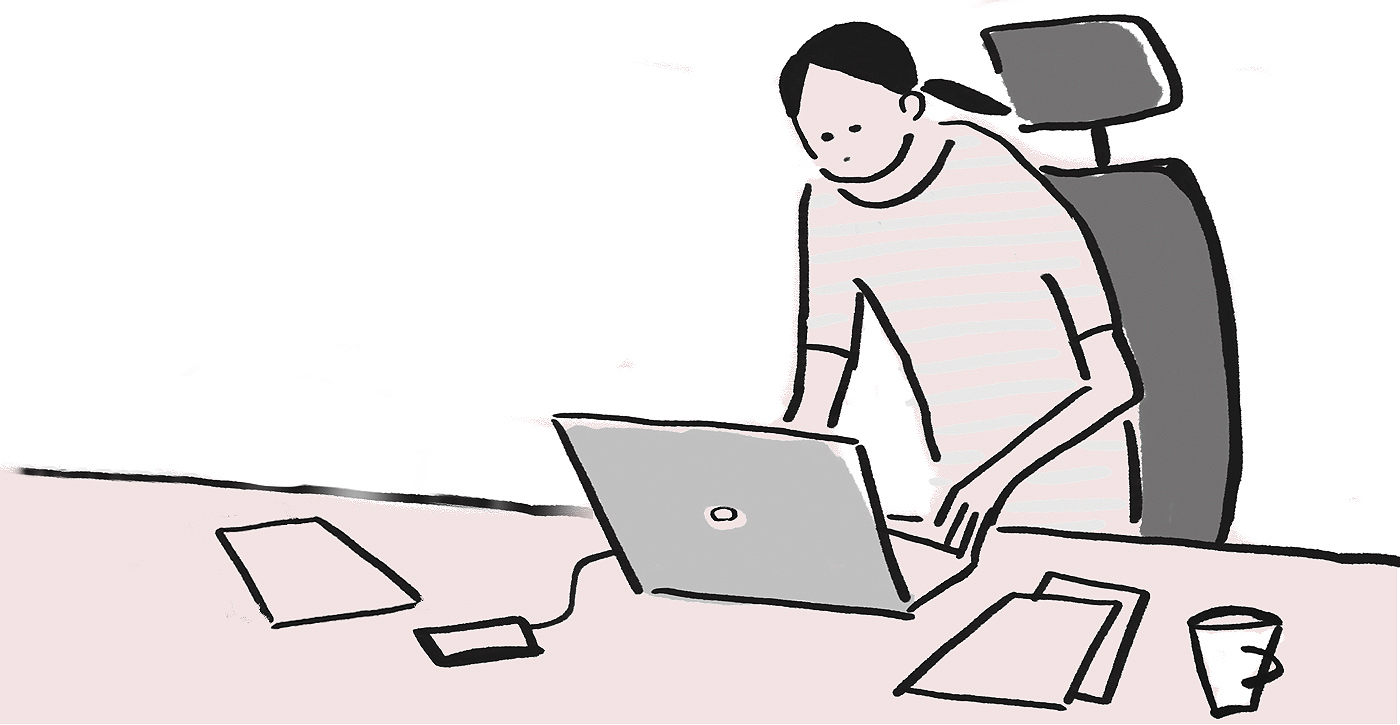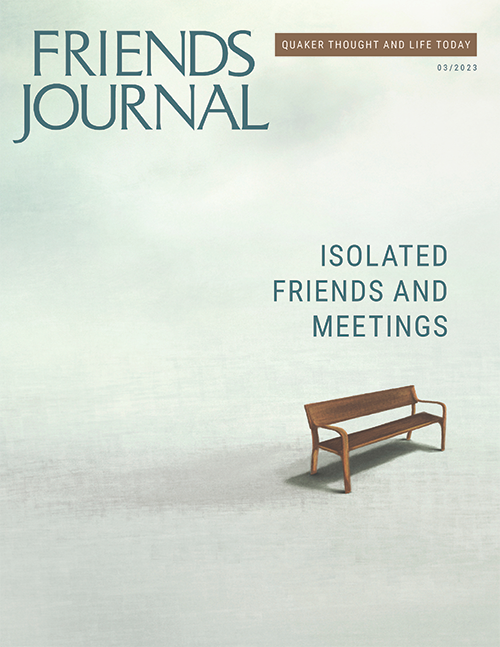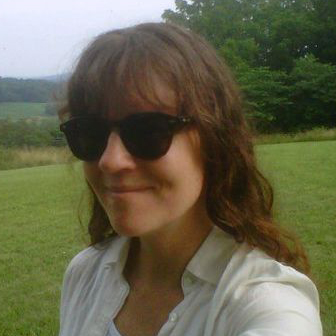The False Promise of Virtual Meetings
Technology, whether it be for entertainment, learning, or communication, can be useful in many ways. The pandemic made technologists of all of us. Work, then entertainment went online, and soon the absence of gathering in person was filled with Zoom meetings for social interaction, school, and finally meeting for worship. “Wherever two or more are gathered” was taken at its root meaning, and Friends began to gather one by one and then in larger technological groups for meeting for worship. There is nothing inherently wrong with entertainment moving from gathering together to streaming or with using Zoom, for example, for learning or connecting with colleagues. It is when we overly rely on technology to facilitate the majority of our human communications that problems arise. Just as we have recognized what we lose when we see a film by ourselves on a small screen, we need to acknowledge the change wrought by technology in our worship.
Community is at the center of the Quaker experience, and throughout its history, Friends have clustered in towns large and small, gathered in meetinghouses, and even traveled together when meetings relocated. During the pandemic, however, we came to rely on the technology of remote conferencing in order to stay safe and stay connected to friends and to Friends in our spiritual practice. This enabled us to worship as a gathered meeting, even in our homes far apart; learn Quaker history; and listen to Friends’ messages. Clearly this was an advance. But like all that moves forward, something was left behind.
Perhaps it was my Waldorf education. Perhaps it was the fact that my parents ignored my schooling and let me watch as much TV as I wanted. Perhaps it was the fact that I overdosed on TV and old films so much that by the time I got to college I had the following realization: too much technology makes me feel awful. I become disconnected, distracted, and disproportionately not present.
But there was one takeaway I got from my untold hours of TV and old film watching: people used to communicate differently from the way we do now. They made eye contact; they listened to each other; and they took turns speaking. I realize, of course, that this is a construct and that I was watching an idealized version of human communication as depicted by TV and film scriptwriters. But this does not negate the fact that, as a society, we were once taught how to communicate with each other face-to-face, and our communication skills have, since the advent of technology, all but disappeared.
When I was a preschool teacher, I noticed a child trying to tell me something while running away. It was jarring that he was leaving and trying to connect at the same time. I realized that young children must be taught how to make eye contact, to listen to their adults and peers, and to remain in one place while doing so. Modeling that behavior is one of the life skills imparted by early childhood education. Little ones are very busy doing many things at one time, and effective communication skills are not at the top of their priority list. Mute buttons and screen captures can impose order, but if that behavior does not emanate from within, it is just window-dressing on civility. Quakerism was founded on the idea that one does not need a moderator in their interlocution with God. Zoom functions best when a moderator has control of a mute button and can maintain order, silence someone’s echoey connection, or manage a malfunction in the operation. These two perspectives coexist with friction.
As a society, we have become like the small children I used to teach. We are overextended; we are goaded into doing too much by the fear of missing out; and we no longer know how to simply be present in the company of others. Meeting for worship reveals this behavior when it occurs in person, especially when someone’s message grows out of the “we” and into the “me,” or the younger set sits for that part of meeting that is appropriate for their development. Young children are not the only ones who lack social skills. A recent visit to a doctor resulted in a conversation about how patients and doctors have also forgotten how to communicate with each other. The now common electronic tablet list of questions, forms to fill out, and boxes to check can add a technology-made barrier between doctor and patient.

Another example of the loss of social skills is the issue of isolation that has resulted from remote work. As I write, two friends are looking—after several years of working at home—to return to a workplace with colleagues. They are tired of being alone in their apartments, and what they miss more than ever is what David Brooks, of the New York Times, refers to as “social capital”: the small moments we have with a colleague or a perfect stranger—say a neighbor walking a dog—that connect us to one another and take us out of ourselves. I remember only too well running into a parent in the hallway when I was a teacher, and how just a five-minute conversation could leave me smiling for the rest of the day. What is missed when we substitute technology for touch, and remote for real time, is the subtle and the easily missed.
During the pandemic, I taught an online writers’ circle at the New York Public Library. I immediately noticed how much I disliked teaching online and the odd, static feeling I got from staring at my students on a screen, especially when some were getting up, leaving the room, playing music in the background, and lacking an understanding of the mute function. I found myself frustrated and de-energized by the lack of interaction. It was exactly the opposite feeling of leaving the library after a live session and heading down to the subway, tired but inspired by the thoughts, connections, and conversations of my students. Once it moved online, I appreciated that we could continue to meet with each other but also felt that the very technology contributing to this connection was at the same time dehumanizing us.

Now that the pandemic’s most acute lockdown phase is over, we have the opportunity to return to each other and rebuild the nuance and unknown of in-person connections. As Friends have learned more about the intricacies of meeting in person safely (masking, staying away when ill, vaccinations for the benefit of others), we can come back to meetings for worship, no matter how small, that have been at the heart of the Quaker movement for centuries. In this return, we can once again seek Spirit while being physically present with each other.
Meeting for worship grows out of the simple admonition to gather that is the hallmark of every religion. This gathering can start quite small, even in your or your neighbor’s home. It is not the place but the gathering together that makes the meeting. My late mother-in-law, Maria Prytula, was a part of New York Meeting in the 1970s, and attended an old and well-established meeting for worship with a lovely meetinghouse and an active membership of Friends and the curious. It was a good home for a wandering ex-Catholic. The meeting made a permanent impression, so when she moved to Harrisonburg, Virginia, she looked for and did not find a similar established presence. There was no formal meeting; however, one took place weekly in the homes of several families so like-minded Friends could worship together. In time Maria began hosting as well, liking the rhythm and the community that came with worship. The homes that were thus temporarily transformed eventually returned to living rooms and their prosaic life, but the gathered Friends stayed connected. As the group outgrew the houses, church basements were rented, and more gathered.
By 1983, a name was agreed upon—Harrisonburg Meeting—and it fell under the care of Charlottesville (Va.) Meeting. The regional affiliation was with Baltimore Yearly Meeting, as well as Virginia Half Years Meeting. Over the years, the meeting grew, moved to a local church, and was granted monthly meeting status by Baltimore Yearly Meeting. In addition, Harrisonburg Meeting became fully affiliated with both Friends General Conference and Friends United Meeting. Eventually, a meetinghouse budget was created, and a church building was purchased and renovated in the neighboring town of Dayton. The first meeting was held there in April of 2000, and the name was officially changed to Valley Friends Meeting; it is still active today.
For Friends who have no access to a local meeting, Zoom can be an alternative, one that did not exist in any way, shape, or form in 1983. It can bring Quakers together again to worship and learn from each other from their living rooms, without having to set up extra chairs among the couches and settees. It can support the homebound as well as the immunocompromised, for whom basic prevention is not enough. However, in relying upon Zoom, we lose the many benefits of worshiping in person: the quiet or not so quiet of an urban meeting trying to center amid the hubbub; eye contact over a cup of coffee during fellowship hour; the warm facial expressions exchanged in a conversation in the parking lot; the impromptu opportunities for eldering; the modeled behavior of sitting quietly in worship—in short, the live human connection. For these reasons, an in-person meeting, where one is possible, will always be more gratifying to me.
The change in the nature of the COVID-19 pandemic as we move into an endemic state has enabled meeting for worship in person once more, and allows for the empty chair, so to speak, that invites a fellow Friend, seeker, or stranger to sit with us.
Anita Bushell was interviewed for the March episode of our Quakers Today podcast.





I take strong issue with the title and caption you used for the article by Friend Anita Bushell in the March 2023 issue. Neither “ZOOM SPELLS DOOM AND GLOOM” nor “The False Promise of Virtual Meetings” is an even remotely accurate indication of what Friend Bushell wrote, and both are, in fact, for many people, outright falsehoods.
I expect better from FJ than the use of sensationalist headlines.
George Hebben
Kalamazoo Friends Meeting
Hi George, that title was suggested by the author herself when she sent the article to us (we trimmed it a bit for space). While many Friends might disagree with the sentiment, I can confidently assure you that it is indeed an accurate summation of her feelings.
I think if it is a terrible title, whoever created it. It comes across as an attack on all of us who are still using Zoom and benefiting from it. Zoom is a way that Quakers can extend our ministry and our community.
I agree. Misleading headlines and generalized content do not reflect my experience. The internet is a tool. It works as well as we are skilled in using it. To quote: “The Lord showed me, so that I did see clearly, that he did not dwell in these temples which men had commanded and set up, but in people’s hearts … his people were his temple, and he dwelt in them.” – The Journal of George Fox
I agree with George Hebben. The headline for Anita Bushnell’s article is more like what I’d expect to find on a supermarket check-out newsstand. Further disappointing, Ms. Bushnell’s article, while fairly affirming many of the values of meeting in person, unfairly diminishes the experiences of meeting on line. Those are different experiences, to be sure, but they are not universally devoid of true personal and spiritual connection. Being together in person is no more a guarantee of being genuinely connected that being together on online is a guarantee of being disconnected. The challenges of relationship are far more complex and nuanced, no matter what relationship might be under consideration. We need to consider the various ways we might connect with one another, with what Aldo Leopold called the Land (meaning all of the natural world), and with Spirit (or whatever name we might give to the Other).
I’m grateful for the perspective voiced in this article. It’s important that we talk about how the use of Zoom in online-only and hybrid (blended) meetings for worship is affecting our experiences. Besides the concerns raised above by George about the title and caption, which I share, I have a couple other thoughts about the article.
First, it is much easier for me to absorb the perspective of someone’s experience of meeting for worship when they speak for themselves only. I trip over a phrase like “As a society, we have become like the small children I used to teach,” and it’s hard to do the work of translating that to “one person has noticed that some people around her seem to her to have become like small children.” I can do it, but is this obstacle really necessary?
Second, saying “we lose the many benefits of worshiping in person” as if this is true for everyone does not leave much space for the possibility that some meetings, such as my worship group Three Rivers, consider not what we lose from online or hybrid worship, but what we gain. For example, because we all meet online, we are able to welcome and support people at a great distance from Boston, people with limited mobility, people who need on-screen captions in order to understand what is being said, people who need one-on-one pastoral care in the middle of worship, and people who cannot attend at the time we meet and want to watch a recording or read a transcript of the prepared message later. These are just a few of the things we gain from our preferred format of worship.
I can’t help wondering if the author is trying to persuade me to go back to the “before times.” For me, those times, when we were all too happy to round down to zero those Friends who needed the accommodations that online worship can provide, are best left behind.
Thank you, I think we gain from having many ministries. We are no longer in 2020 but we can’t go back to 2019 either.
David, your reflections on Anita Bushnell’s article are insightful and helpful. Our small meeting was on the brink of death when the pandemic hit us. Going to Zoom meetings, for the most part, with occasional in-person ones that included pot-luck meals, enabled our widespread members, many of whom were unable to travel regularly or just too far away, to be together, see and hear one another, and I dare say, feel one another more often and even more fully than many of us had for a long time. Meeting via Zoom is different, to be sure, and it doesn’t work well for all of us, especially one who is hearing impaired and relies on reading lips. I miss hands and hugs! I miss some of the collective energy of being together physically. But I am often moved by the way Spirit moves in and among us during meetings for worship and via our more frequent email communications than we had before. We had to become more intentional about reaching out, and we have. What I prefer to call “waiting worship” (“un-programmed” always felt negative to me) is rich and enriching for more of us more of the time than I’ve experienced in years, and most of us would affirm that, I think.
Anita Bushell, I find that the addition of Zoom and hybrid meetings to our communities is a valuable ministry. Everyone on Zoom is part of the community and we should work to include them. As you say, it allows people to participate who could not participate before. This isn’t just about meeting for worship, it’s also meeting for business, talks, and social gatherings.
Most people do like to see each other in person and most meetings have activities that are in person or hybrid. I don’t think we need to advocate for in person activities so much as figure out how to make them available to everyone.
May I suggest that one way to welcome more people to in person worship or fellowship is to have activities outdoors as much as possible? This can allow people who are trying to avoid COVID to be in person, too. Some activities that have worked at Sandy Spring include outdoor meetings for worship, silent walks, and a Christmas posada instead of a pageant. I know other meetings have had outdoor potlucks.
COVID is not technically endemic yet, but more importantly it is not something we can ignore. COVID is still killing many more people than the flu. We have lost valuable treatments for immunocompromised people. Most people have not had boosters and the boosters wear off over time. We still need to be mindful of how to protect and include members of our community.
Zoom is one piece of gathering safely. I don’t think it is a false promise or something we need to criticize. Rather, we can make it part of how we build our community. At the same time, we can add as many opportunities as possible for people to gather in person safely.
I was disappointed by the title, too, and by what felt like, to me, the very negative tone of the article regarding Zoom meetings. I am a Friend-in-process; a long-time member of another denomination, but feeling strongly called to Quaker beliefs and values … and worship. I “attend” a meeting (Mountain View Friends) that is 250 miles (yes, that’s right, 250) from where I live, which is in a very isolated rural part of Colorado. The Friends at that meeting have been welcoming to my husband and me, and are providing us with a truly Friend-ly space to experience and learn more about the process of “waiting worship” (thank you, Michael; I like that name too). It is being deeply meaningful to us, and I am so grateful that Zoom makes it possible for us to be — albeit at a physical distance — part of that community. I know it’s hard, when you live embedded in the midst of too many people to count, to understand what it’s like for those of us who live a long way from those kinds of spaces. For many of us out here on the borders, Zoom has been an enormous gift, as we know it has to others who, for various reasons, are unable to participate in an actual local physical worshipping community.
Thank you to Anita Bushell for a wonderful piece of writing. I was grateful to hear someone “speak my mind” on the subject of the alienating, disembodied experience of zoom worship as well as virtual “meeting for worship with a concern for business” meetings. Finishing a two-hour business meeting alone in your apartmet IS depressing. (doom)
That said, Pendle HIll’s daily half-hour viritual Meeting for Worship was a welcome vital force in my life during lockdown; but when I returned to our Meeting House in NYC for the first time, I wept.
While business can be conducted online, there is simply no comparison to being physically present with others as a body and in our bodies to experience a gathered meeting or to get a true “sense of the meeting.” Part of the ubiqutous anxiety in contemporary culture is owing to the drain on our nervous systems which are trying straining to accomodate a version of life that is two-dimensional on a screen. Our nervous systems and bodies are built to move through space and the world, particularly in the outdoors, and for being face to face with others to bear witness. Real communion with others changes our body chemistry and affects our health.
Lorraine Kreahling
With a Friend, during the pandemic, we continued holding meeting for worship at Geneva Quaker House, one year and a half. We were most often the two of us, sometimes alone, rarely with other attenders. Some people are very happy with online gatherings, other are not. First – I am part of the people needing in person meetings, for me the worship has to do – also – with the body. Second – Online meetings rely on a technology which is not neutral. The ecological and social costs are ignored although well documented. The energy necessary for online meetings is not reasonable, we live in a time of climate change and need to reduce our ecological footprint enormously. The social costs are also contrary to our testimonies. The ongoing wars in Central Africa are closely linked to the extraction of raw materials for computers, and the disposal of electronic waste is disastrous. In both these areas we can speak of slavery. In short, the pandemic is an invitation “to do less”, not to do more use of controversial technologies.
Staying home and attending via Zoom is more environmentally sound than driving 100 kilometers to get to a meeting and back.
I was a long time member of Greenville (NC) Friends Meeting (NC Conservative) which transitioned into a worship group recently. I had moved to Tennessee and not connected with another Friends group. This has happened in moving, usually when a Friends group is more than 10 miles away and somehow using the gas to get to meeting and the time driving seem to inhibit attendance. I was still in the email link and, when the pandemic started, I began regular, almost weekly attendance, at the meeting. Others have since moved also, but we are still meeting on the first and third Sundays, which is wonderful for me.
Maybe some Friends’ Meetings would be open to visitors and Friends from other places? It would be nice to have a directory of such meetings. Some meetings have Weds night worship groups. Also, I’ve enjoyed “Circles of Eight” dinner meetings which typically would be meeting once a month for a year.
Yes, I do need to find a meeting, but this has been a wonderful lifeline for me.